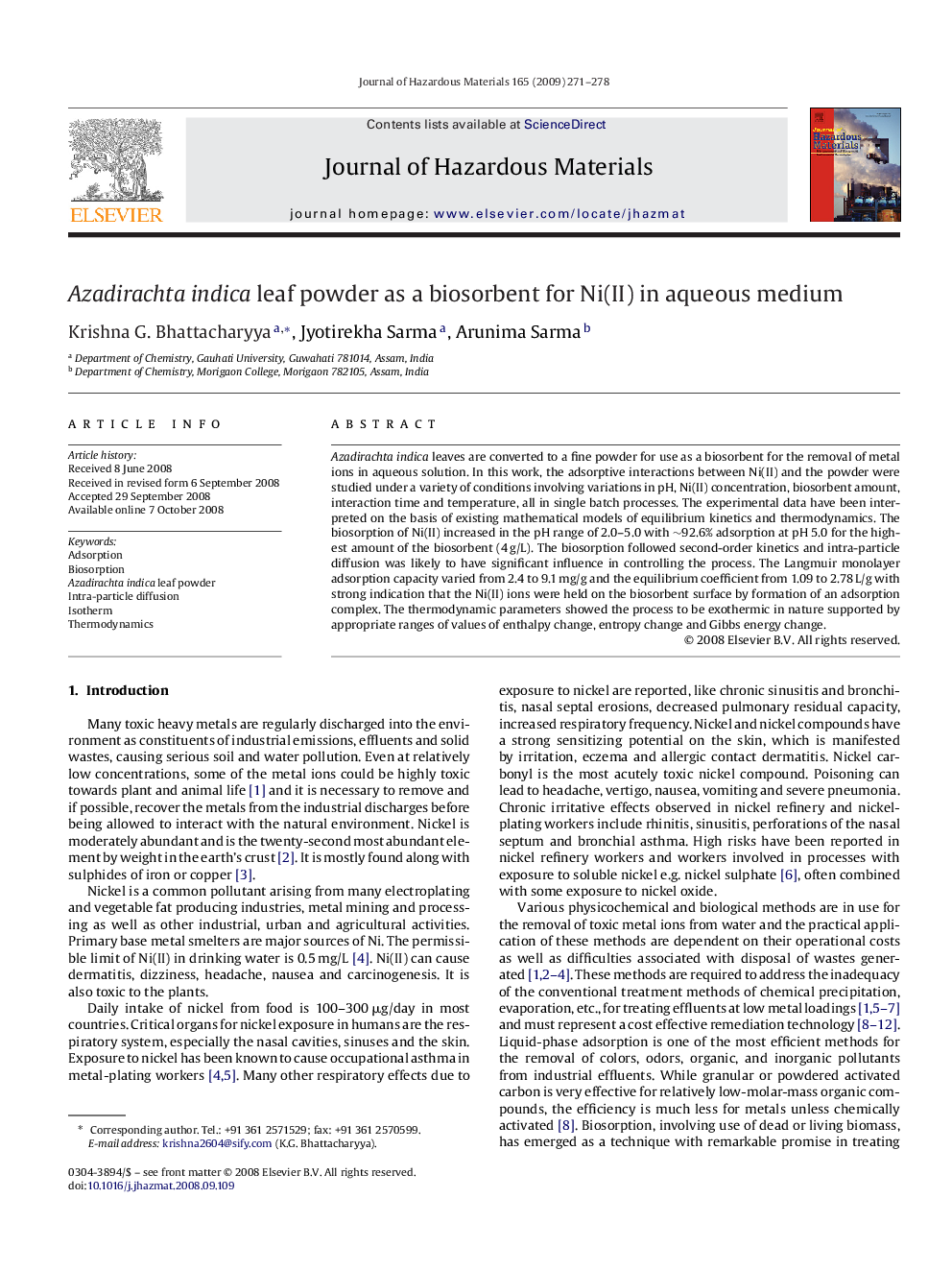| Article ID | Journal | Published Year | Pages | File Type |
|---|---|---|---|---|
| 582274 | Journal of Hazardous Materials | 2009 | 8 Pages |
Abstract
Azadirachta indica leaves are converted to a fine powder for use as a biosorbent for the removal of metal ions in aqueous solution. In this work, the adsorptive interactions between Ni(II) and the powder were studied under a variety of conditions involving variations in pH, Ni(II) concentration, biosorbent amount, interaction time and temperature, all in single batch processes. The experimental data have been interpreted on the basis of existing mathematical models of equilibrium kinetics and thermodynamics. The biosorption of Ni(II) increased in the pH range of 2.0-5.0 with â¼92.6% adsorption at pH 5.0 for the highest amount of the biosorbent (4Â g/L). The biosorption followed second-order kinetics and intra-particle diffusion was likely to have significant influence in controlling the process. The Langmuir monolayer adsorption capacity varied from 2.4 to 9.1Â mg/g and the equilibrium coefficient from 1.09 to 2.78Â L/g with strong indication that the Ni(II) ions were held on the biosorbent surface by formation of an adsorption complex. The thermodynamic parameters showed the process to be exothermic in nature supported by appropriate ranges of values of enthalpy change, entropy change and Gibbs energy change.
Related Topics
Physical Sciences and Engineering
Chemical Engineering
Chemical Health and Safety
Authors
Krishna G. Bhattacharyya, Jyotirekha Sarma, Arunima Sarma,
